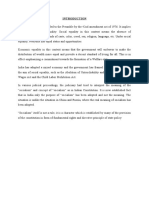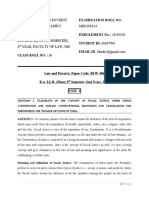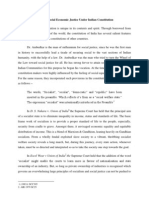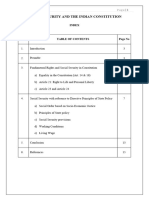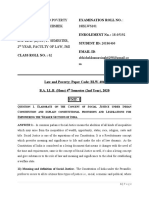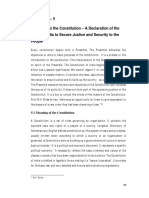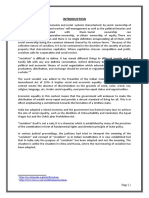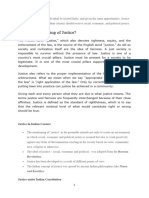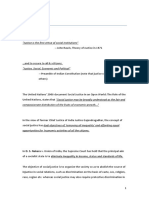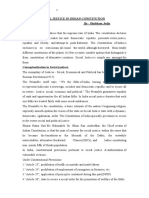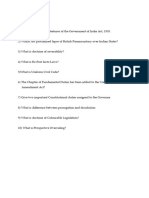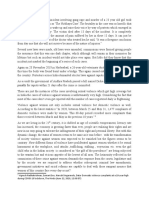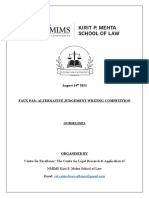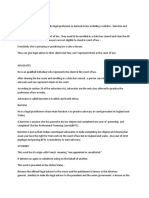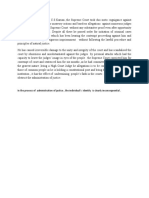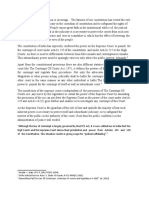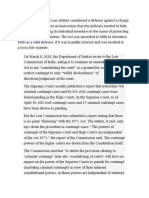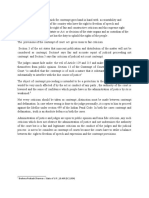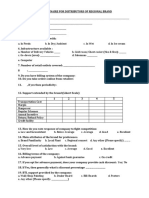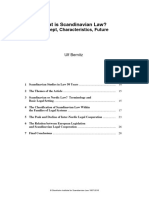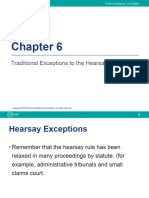0% found this document useful (0 votes)
46 views2 pagesMade: AIR 1983 SC 130
The document discusses socialism in India and the goals of a socialist state as outlined in the Indian Constitution and judicial decisions. As a socialist state, the Indian government aims to ensure minimum facilities and reduce inequalities in income, resources, employment opportunities and eliminate exploitation of laborers.
Uploaded by
SHASHI BHUSHANCopyright
© © All Rights Reserved
We take content rights seriously. If you suspect this is your content, claim it here.
Available Formats
Download as DOCX, PDF, TXT or read online on Scribd
0% found this document useful (0 votes)
46 views2 pagesMade: AIR 1983 SC 130
The document discusses socialism in India and the goals of a socialist state as outlined in the Indian Constitution and judicial decisions. As a socialist state, the Indian government aims to ensure minimum facilities and reduce inequalities in income, resources, employment opportunities and eliminate exploitation of laborers.
Uploaded by
SHASHI BHUSHANCopyright
© © All Rights Reserved
We take content rights seriously. If you suspect this is your content, claim it here.
Available Formats
Download as DOCX, PDF, TXT or read online on Scribd
/ 2

